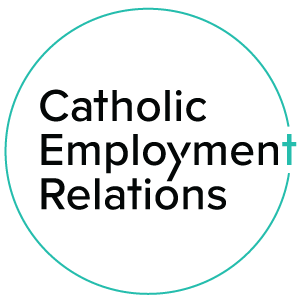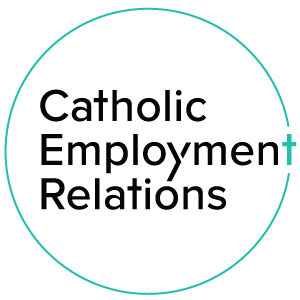CER’s guide to creating a safe and positive work environment
How do you ensure you are providing a safe work environment?
Follow our practical guide to ensure that the work environment you are providing is a healthy and safe workspace where team members can focus on working productively towards your organisational goals. To create a culture that truly thrives, it’s vital to know how to create a healthy and open environment with workplace safety firmly embedded in everything you do. October is National Safe Work month with a different topic of focus each week on an aspect of safety at work:
Injuries at work,
Mental health,
Managing WHS risks and preventing harm,
Safe and healthy work for all.
This is an opportune time to check your current WHS polices and processes that cover both the physical and psychological well-being of staff and our practical step-by-step guide will show you how to get started.
Benefits
Employee wellbeing is key to the efficient and effective operation of businesses. Optimising wellbeing will improve the worker experience and lead to happy, healthy and productive workplaces.
Recently there have been significant changes to the way in which we work and this has resulted in work-related stress and mental health symptoms. Also due to the challenges presented by the pandemic, an increase of remote work, digitisation and the introduction of new technologies and processes has added to that stress. It is important that we focus on improving working conditions through our leadership practices, improved methods and tools. Key work health and safety statistics, Australia 2021
What should you be doing as an employer to ensure you are providing the best support for your staff?
The checklist below is a starter list and covers the more general aspects of work health, safety and well-being. The policies and procedures that an organisation will adopt will depend on the nature and size of the business, while others may relate to specific activities of the business. Request CER’s WHS Management System Guidelines here.
Work Health and Safety Checklist
-
1. Do I know who the PCBU (person conducting a business or undertaking) is and what their duties are?
2. Do I know who the officers are and their obligations?
3. Do I know who my workers are (is it more than just my employees)?
4. Do I know what the relevant legislation is?
-
5. Do I have a work health and safety policy?
6. Do I have systems in place to ensure work health and safety matters are considered in all planning and decision making?
7. What mechanisms do I have in place to provide information, training instruction and supervision?
8. What mechanisms do I have in place to monitor the health of my workers to prevent illness or injury?
9. Do I know what other workplace policies I should implement?
10. Do I have notifiable incident procedures in place?
11. Do I have a hazardous substance register?
12. If I have Health and Safety Representatives (HSR), do I have an up to date list displayed for workers and have I provided it to SafeWork NSW?
13. Do I know if I have all the authorisations I’m required to have?
14. Do I have document control and review in place?
15. Have I sufficiently communicated these documents to workers and others?
16. Do I know these obligations are being met?
-
17. Do I have procedures in place to assess, eliminate or minimise risks?
18. Do I know when to undertake risk management?
19. Do I know of any risk assessments commonly undertaken?
20. Do I know these obligations are being met?
-
21. Have I consulted with other PCBUs where necessary?
22. Am I aware of my duty to consult with workers?
23. Do I know when I need to consult with workers?
24. Do I have mechanisms to ensure consultation occurs?
25. Do I know what procedure to follow if an issue is raised that cannot be resolved?
-
26. Do I know who a Health and Safety representative (HSR) is?
27. Do I know what to do if a HSR is requested?
28. Do I know the training and other obligations I have to HSRs?
29. Do I know what to do if I received a provisional improvement notice (PIN) from a HSR?
30. Do I know my obligations regarding health and safety committees (HSCs)?
31. Do I know the functions of the HSC?
32. Do I know these obligations are being met?
-
33. Do I have first aid equipment and facilities?
34. Have I enough workers trained to administer first aid?
35. Have I developed an emergency plan?
36. Do I have adequate welfare and general workplace facilities?
37. Do I have people working at other workplaces?
38. Do I have people working remotely or in isolation?
39. Do I know these obligations are being met?
-
40. Does my organisation design, manufacture, import, supply, install or commission plant, structures or substances?
41. Is my organisation involved in hazardous or high-risk work?
42. Do I know how to identify and manage asbestos?
It’s also important to foster an environment in which employees feel they can talk about work without judgement. Encourage staff to be open if they are having issues with workload or deadlines, or are unclear about a project or their role. Being able to talk about work stresses and pressures can often go a long way to alleviating them. It’s also important to provide avenues for staff to share ideas and feedback. Not only does it make them feel included, but you might find excellent new suggestions and solutions.
Summary
A workplace health and safety management system is constantly evolving and improving and provides for more informed decision making. It strengthens organisational culture and also demonstrates due diligence. When developing your policies and procedures it is important to consult with and engage your staff. Effective consultation encourages greater awareness of issues and can lead to an improved safety culture and outcomes. Your employees will understand the importance of policies and procedures and why they need to be implemented – they will also be realistic and actionable.
Well designed policies and procedures help organisations comply with work health and safety legislation and regulations and are regularly reviewed. So take the time to review your current procedures and make any necessary adjustments to keep them up to date.
Contact us if you need support or help with your Work Health and Safety (WHS) policies. CER has developed WHS guidelines and policy templates that can be adapted and customised for your organisation.


